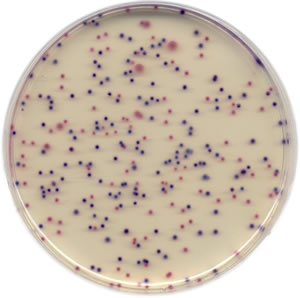
I've been working with a type of E. coli lately that is genetically modified to be non-pathogenic, or unable to cause disease. The project to detect the bacteria was already under way when I joined the team here at Lincoln University, but it was going relatively poorly. A colleague and I took over the project and analyzed all of the procedures and methods, as well as the results that were being gathered. Then, we rewrote the protocols that were being used. To be sure that the protocols that we wrote were the most effective, I have personally been either conducting or overseeing the various aspects of the project. Results have gotten better and the research project seems to be running much more smoothly. At this point, then, we're ready to begin matching the sensor data that we're gathering with actual concentrations of E. coli cells. But determining the concentration of a suspension of cells is not strictly an exact science.
Here's how it works. You take a certain volume of your cell suspension - for the sake of simplicity, let's choose a volume of 1 ml - and disperse the suspension onto some sort of nutrient-containing plate. In our work, we use polystyrene petri dishes with a nutrient-enriched agarose. The cell suspension spreads out over the agar and the bacteria stick to the surface, start feeding on the nutrients in the agar, and begin to divide and proliferate. As the cells reproduce, they do not move away from each other. Instead, they sort of remain stuck together. And as they continue to proliferate, they create a little cell colony. After a certain incubation time, say 24 hours, each viable cell on the plate gives rise to its own discreet colony. Then you go through and count the number of colonies on the plate. Let's say for example that you count 100 colonies on a given plate. Since you started with a volume of 1 ml, that means that your concentration is 100 CFU/ml, where CFU = colony forming unit.
But there's a bit of a problem with my example, because 100 colonies on a plate is not a realistic number. More likely, the number of colonies would be several-fold larger; possibly in the thousands. That's a lot of counting...1 colony, 2 colonies, 3 colonies, 4...
There are ways to make this process a bit easier. Probably the most obvious option would be to divide the plate into even sections. If you divide the plate into, say, 4 equal area segments, then you only need to count the number of cells in one of those segments and simply multiply that number by 4. Either way, though, it's not a lot of fun and I'm not looking forward to it.



No comments:
Post a Comment